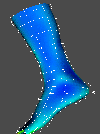 |
 |
 |
 |
 |
 |
 |
 |
 |
 |
 |
 |
 |
 |
 |
 |
 |
 |
Members of the laboratory regularly publish in international journals, present papers at conferences and play an active role in the international research community (see Publications). GML runs several international research projects together with partners from Europe and the USA (see Grants and Partners). Teaching computer aided geometric design for the next generation is also an important mission for GML, besides regular courses at the Technical University and the Eötvös Loránd Science University, several PhD doctorands work under the supervision of the permanent, senior members of GML (see People).
In the last 23 years GML has contributed to the theoretical ground work of CAGD both in the areas of surface and solid modelling. Recent research efforts include surface modelling with irregular topology, edge and vertex blending and various issues in reverse enginering, such as data acquisition, triangulation and decimation, merging multiple point clouds, segmentation, surface fitting for analytics and parametric surfaces and the actual reconstruction of free-from and conventional engineering parts. Most important current applications arise in the automotive and the medical (orthopedic) fields. To gain more understanding about the recent work of GML visit the Research Topics, the Publications, the Recent Abstracts and the Picture Gallery pages or visit the Institute's Annual Research Reports.
GML is also involved in researching computer vision techniques. The Image and Pattern Analysis Research Group is an independent unit within GML: we have many common interests particularly in the area of reverse engineering.
